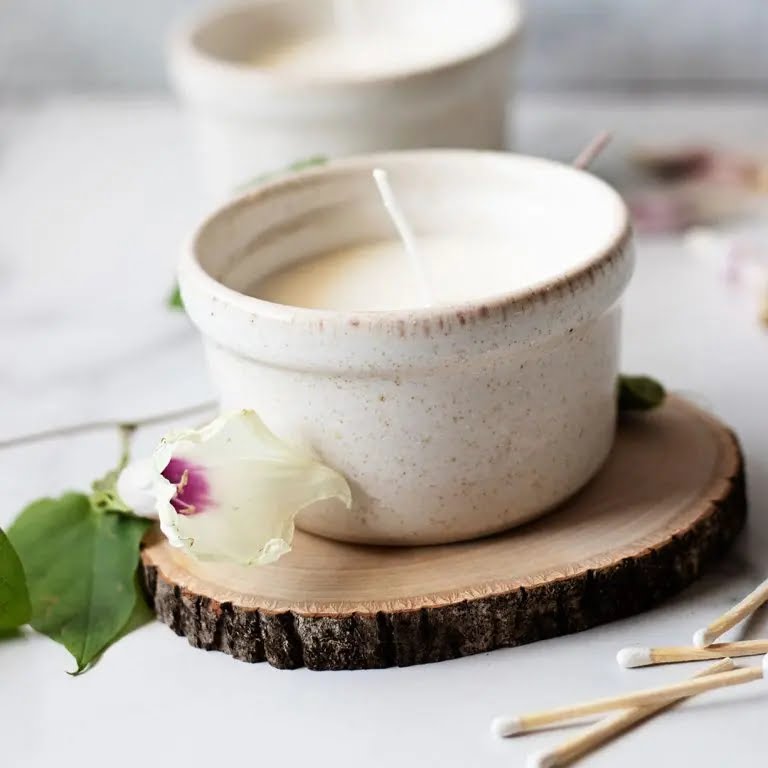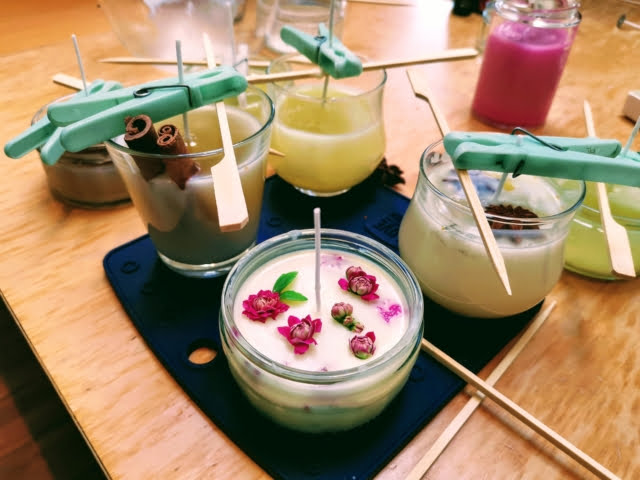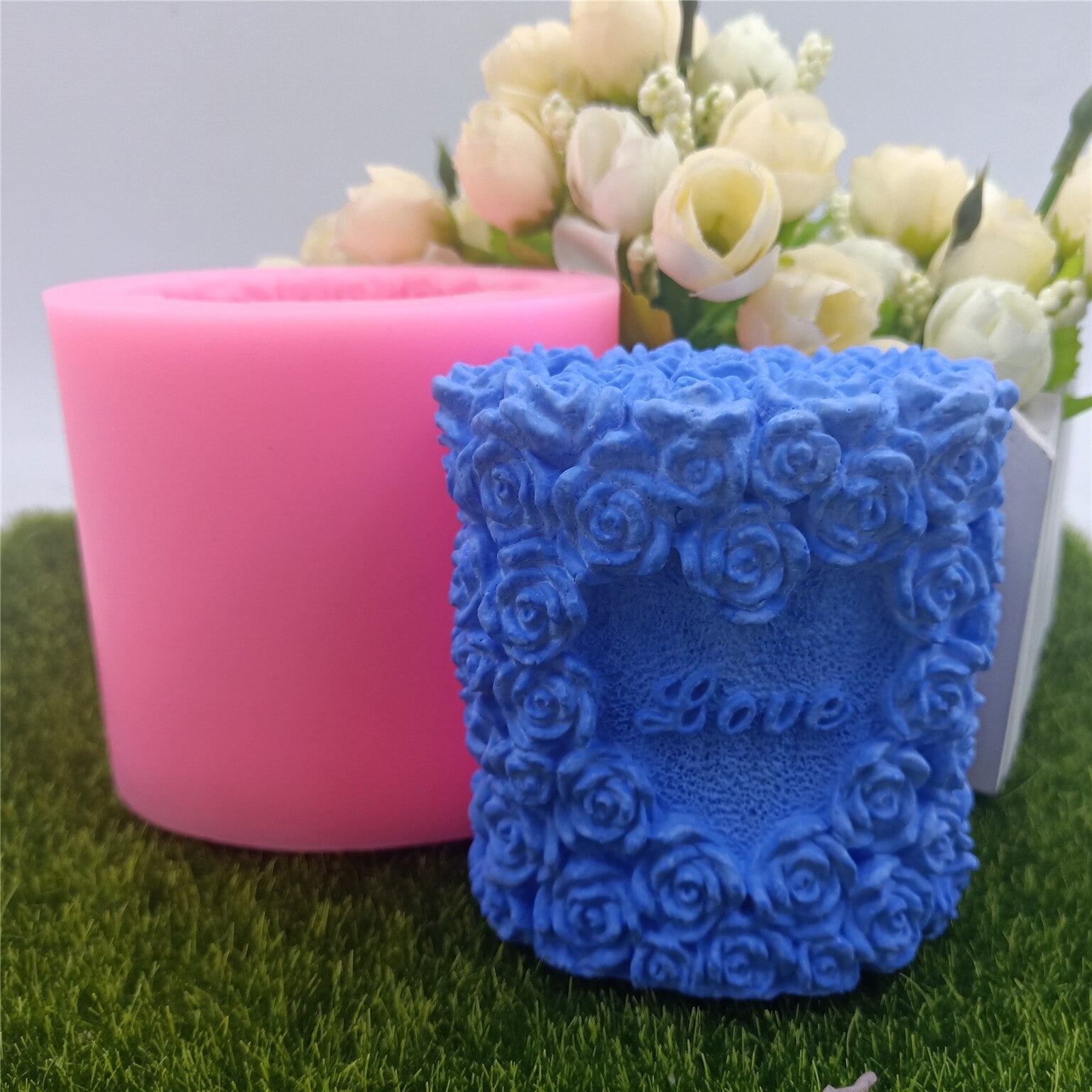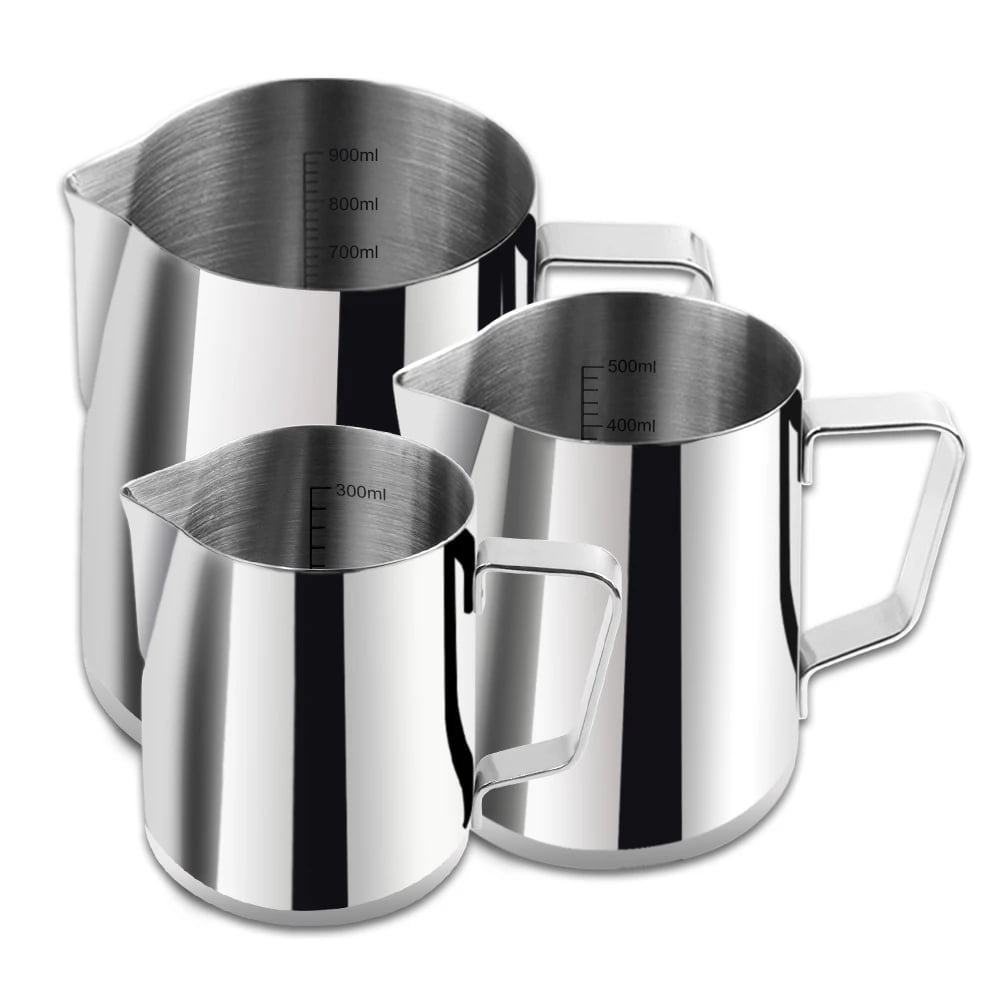Candles have been used for centuries to brighten and illuminate our spaces, but did you know that there is a secret ingredient that can enhance their quality? This ingredient is called Vybar, and it is commonly used in candle making to improve the performance and aesthetic appeal of candles. Adding Vybar to your candle-making process can result in beautiful, long-lasting, and fragrant candles.
Vybar is a unique additive that is used to modify the properties of candle wax. It is typically made from refined polyethylene and acts as a binding agent that helps candles burn evenly and release fragrance more effectively. When Vybar is added to the wax, it increases its opacity, hardness, strength, and flexibility. These enhanced qualities make candles burn longer with a stable flame and prevent issues like tunneling or cracking.
One of the main reasons why Vybar is used in candle making is because it helps bind fragrance oils in the wax. Without an additive like Vybar, fragrance oils can separate or float on top of the wax, resulting in poor scent throw when the candle burns.
Vybar ensures that the fragrance oils are evenly distributed throughout the wax, allowing for a consistent release of scent while the candle burns. Additionally, Vybar also helps reduce surface wetness or sweating on candles caused by certain fragrances.
In this article, we will explore everything you need to know about using Vybar in your candle making process.
We’ll delve into the benefits of incorporating Vybar into your candles, discuss different types of Vybar available and their specific uses, guide you through step-by-step instructions on how to use Vybar effectively, provide troubleshooting tips for any issues that may arise during the process, and even inspire you with creative ways to add colors, fragrances, and textures to your candles using Vybar.
So let’s dive in and discover how this magical ingredient can transform your candle-making journey into a truly professional one.
The benefits of using Vybar in candle making
Vybar is a highly versatile additive that offers several benefits when used in candle making. Here are some of the key advantages of incorporating Vybar into your candle making process:
- Improved scent throw: One of the main benefits of using Vybar in candle making is its ability to enhance the fragrance release of candles. Vybar acts as a binder, helping to hold scent molecules within the wax, allowing for a stronger and longer-lasting aroma when the candle is burned.
- Increased opacity: Adding Vybar to your candle wax can also result in a more opaque finish, especially when using dyes or pigments. This is particularly useful when creating candles with vibrant colors or trying to achieve specific visual effects.
- Reduced mottling and frosting: Mottling refers to the creation of a textured pattern on the surface of a candle, while frosting manifests as a cloudy or white haze. Both issues are common problems in candle making, but by utilizing certain types of Vybar, you can minimize their occurrence. Clear varieties of Vybar are often used to prevent frosting, while opaque versions help reduce mottling.
To fully leverage these benefits, it is essential to understand the different types and grades of Vybar available for candle making purposes. There are three main types:
- Vybar 103: This type is ideal for use in container candles and will help improve scent throw and color vibrancy.
- Vybar 260: Best-suited for pillar candles or any other type that requires rigidity, this variant enhances burn qualities and smoothness while improving opacity.
- Vybar 343: Designed specifically for use in taper candles, this type helps improve burn quality and prevents dripping.
By familiarizing yourself with these specific uses, you can select the most appropriate variety of Vybar for your intended candle-making project.
| Type of Vybar | Best Suited for |
|---|---|
| Vybar 103 | Container candles |
| Vybar 260 | Pillar candles, rigid candles |
| Vybar 343 | Taper candles, dripless candles |
By utilizing the benefits of Vybar and selecting the appropriate type for your specific candle-making needs, you can enhance the overall quality and performance of your handmade candles.
Understanding the different types of Vybar and their specific uses
Vybar is a versatile additive used in candle making to enhance various aspects of the candle. Understanding the different types of Vybar available and their specific uses can help candle makers achieve desired results and create high-quality candles.
Vybar 103
Vybar 103 is often preferred by candle makers because it helps improve fragrance retention in candles. This type of Vybar creates a stronger scent throw, allowing the fragrance to disperse evenly throughout the wax. It also helps reduce mottling, which is when small white spots appear on the surface of a candle. Candle makers who prioritize strong scents and minimal mottling may choose Vybar 103 for their creations.
Vybar 260
Vybar 260 is commonly used to enhance the overall appearance and smoothness of candles. This type of Vybar improves opacity, giving candles a more vibrant color. It also helps eliminate potential flaws such as air bubbles, uneven surfaces, and wax shrinkage during cooling. Candle makers aiming for visually appealing and flawless candles may opt for Vybar 260 in their formulations.
Vybar 343
Vybar 343 is specifically designed to increase fragrance load capacity in candles without sacrificing burn quality or causing excessive mottling. This type of Vybar allows candle makers to incorporate higher levels of fragrance into their candles while maintaining excellent scent throw and minimizing imperfections on the surface. Candle makers seeking to create highly scented and aesthetically pleasing candles often rely on Vybar 343.
It is important to note that candle makers can experiment with different ratios of these various types of Vybars to achieve desired results based on their specific preferences and goals for each individual batch of candles they create. Proper understanding of each type’s specific uses can assist in creating professional-quality candles with enhanced fragrance retention, improved appearance, and reduced imperfections.
Preparing your workspace and materials for using Vybar
Before you start incorporating Vybar into your candle making process, it is important to properly prepare your workspace and gather all the necessary materials. This will ensure a smooth and efficient candle making experience.
Firstly, make sure you have a designated area for candle making that is clean, well-ventilated, and free from any clutter or distractions. This will help create an organized and safe environment for working with Vybar. It is also crucial to have a heat-resistant surface, such as a silicone mat or a metal sheet, to place your melting pot on.
Next, gather all the materials you will need for adding Vybar to your candles. This includes:
- Vybar: Determine which type of Vybar you will be using based on the specific qualities you want in your candles (e.g., opacity, better scent throw). Have enough of this additive on hand for the amount of candles you plan to make.
- Wax: Choose a wax that is compatible with Vybar additives. Many types of waxes work well with Vybar, including paraffin wax, soy wax, and palm wax.
- Thermometer: Having an accurate thermometer is essential for monitoring the temperature of your wax throughout the melting and pouring process.
- Melting pot: Use a double boiler system or a dedicated melting pot specifically designed for candle making. Make sure it is clean and dry before use.
- Candle molds or containers: Depending on your preferred candle style, have suitable molds or containers ready for pouring the melted wax into.
- Wick assemblies: Prepare pre-tabbed wicks that are appropriate in size and length for your candles. Attach them securely to wick sustainer clips if needed.
- Fragrance oils or essential oils (optional): If desired, choose fragrances or essential oils that complement your candles and have good compatibility with Vybar additives.
- Colorants (optional): If you plan to add color to your candles, have suitable colorants on hand, such as liquid dyes, powdered pigments, or candle-specific color blocks.
Once you have gathered all the necessary materials, organize them in a way that allows for easy access during the candle making process. This will help streamline your workflow and prevent any delays or mistakes along the way. It is also advisable to read through the manufacturer’s instructions for each material and make sure you are familiar with their recommended usage guidelines.
By taking the time to properly prepare your workspace and materials before using Vybar in your candle making, you can set yourself up for success and ensure a more enjoyable and productive experience. Remember to prioritize safety at all times by wearing appropriate protective gear, such as gloves and goggles, when handling hot wax and additives.
Step-by-step guide on how to incorporate Vybar into your candle making process
Using Vybar in candle making can greatly enhance the quality and performance of your candles. Here is a step-by-step guide on how to effectively incorporate Vybar into your candle making process:
Step 1: Determine the appropriate type and amount of Vybar to use
Before you begin, it’s essential to choose the right type of Vybar for your specific needs. Different types of Vybarr serve different purposes, such as increasing scent throw, improving opacity, or reducing mottling. Additionally, consider the amount of Vybar needed based on the size and type of candles you are making.
Step 2: Prepare your wax
Start by melting your wax using a double boiler or a wax melter. It is important to follow the manufacturer’s instructions for melting temperature and heating time. Once melted, remove from heat and allow it to cool slightly.
Step 3: Add colorants or fragrance oils (optional)
If you wish to add colorants or fragrance oils to your candles, this is the time to do so. Mix them into the melted wax following recommended guidelines for desired intensity.
Step 4: Incorporate Vybar into the melted wax
Gradually add the specified amount of Vybar powder into the melted wax while stirring continuously. Make sure that all clumps are fully dissolved before moving onto the next step.
Step 5: Stir and mix thoroughly
Using a thermometer, monitor and maintain an appropriate temperature suitable for pouring. Continuously stir and mix the wax with Vybar for at least two minutes after incorporating it to ensure proper dispersion.
Step 6: Pouring and setting
Carefully pour the mixture into your chosen candle molds or containers. Position a wick in each container before pouring if desired. Allow sufficient time for cooling and setting according to product recommendations.
By following these steps, you can effectively incorporate Vybar into your candle making process, leading to improved fragrance retention, reduced imperfections, and enhanced overall quality of your candles. Remember to always refer to the product instructions and experiment with different techniques to achieve the desired results.
Tips and tricks for using Vybar effectively in candle making
Experiment with different ratios
When using Vybar in candle making, it’s important to experiment with different ratios to achieve the desired results. The amount of Vybar you add to your wax will vary depending on factors such as the type of wax you are using, the desired fragrance load, and the color intensity you want to achieve.
It is recommended to start with a small amount of Vybar and gradually increase it until you reach the desired outcome. Keeping a record of your experiments can be helpful for future reference.
Heat Vybar appropriately
To ensure effective dispersion and blending of Vybar in your candle wax, it is essential to heat it properly. Place the required amount of Vybar in a microwave-safe container and heat it on medium power in short intervals (e.g., 10 seconds at a time) while stirring in between each interval. This process helps prevent overheating, which can result in discoloration or clumping of the wax.
Stir thoroughly
To evenly distribute Vybar throughout your candle wax, be sure to stir the mixture thoroughly using a stainless-steel spoon or a heat-resistant utensil. Pay close attention to any lumps or clumps that may form during the stirring process and make sure they are fully dissolved before proceeding.
Use appropriate pouring temperatures
When incorporating Vybar into your candle making process, it’s crucial to pour your melted wax at an appropriate temperature. Pouring too hot or too cold can affect how well the Vybar blends with the wax and may result in issues such as uneven texture or poor fragrance throw in the finished candles. It is recommended to pour at around 180-185°F (82-85°C) for optimal results.
Allow sufficient curing time
After adding Vybar to your candle mixture, it is important to allow the candles sufficient time to cure before testing or using them. The curing process allows the wax and Vybar to fully bond and ensures that the fragrance throw and texture of the candles are at their best. Depending on the specific type of wax and additives used, curing times can vary but generally range from 24-48 hours.
By following these tips and tricks, you can use Vybar effectively in your candle making process to achieve professional-quality results. Remember to always refer to specific instructions provided by the manufacturer of both Vybar and your chosen waxes for best practices.
Common mistakes to avoid when using Vybar in candle making
When using Vybar in candle making, there are several common mistakes that beginners should be aware of in order to achieve the best results. By avoiding these mistakes, you can ensure that your candles turn out beautifully and have a professional-quality finish. Here are some common mistakes to avoid when using Vybar in candle making:
- Incorrect measurement: One of the most common mistakes is not measuring the correct amount of Vybar. It is essential to follow the recommended usage rate specified by the manufacturer. Adding too much or too little Vybar can affect the performance of your candles, such as their scent throw, burn time, and overall quality. Be sure to measure accurately using a digital scale for precise results.
- Improper temperature control: Temperature plays a crucial role during the incorporation of Vybar into your candle wax. Many beginners make the mistake of adding Vybar when their wax is too hot or cold. This can lead to poor dispersion and uneven distribution of additives throughout the candle. To avoid this mistake, it is important to follow the recommended temperature range provided by both the wax and Vybar manufacturer.
- Overmixing or undermixing: Another mistake to avoid is overmixing or undermixing your candle wax and Vybar mixture. Overmixing can result in excess air bubbles being trapped in your candles, leading to an unattractive appearance when burned. On the other hand, undermixing may result in poor dispersion of additives, leading to inconsistencies in scent throw and color distribution. Be sure to mix thoroughly but gently until all ingredients are fully incorporated.
To summarize, avoiding these common mistakes will greatly improve your candle-making process when using Vybar. Accurate measurement of Vybar, proper temperature control during incorporation, and achieving a balanced mix are key factors in creating high-quality candles with consistent results. By following these guidelines, you can enhance both the aesthetics and performance of your homemade candles and avoid unnecessary frustrations.
Troubleshooting
When working with Vybar in candle making, it’s important to be prepared for any potential issues that may arise. Here are some common problems you may encounter and how to fix them:
- Poor scent throw: One issue you might come across is a lack of fragrance in your candles, also known as poor scent throw. This could happen if the Vybar is not properly dispersing the fragrance throughout the wax. To fix this problem, make sure you are using the correct amount of Vybar for your specific fragrance oil. Additionally, try increasing the pour temperature of your candles, as this can help improve scent throw.
- Sinking wicks: Another problem you might face is wicks sinking into the candle during the cooling process. This can lead to uneven burning and an overall poor quality candle. To prevent this issue, ensure that you are using the appropriate size wick for your candle diameter and type of wax. You can also try pouring at a slightly lower temperature to allow more time for the wick to set in place before cooling.
- Frosting: Frosting is a common issue that can occur when using Vybar in candle making, especially with soy wax. It appears as white crystals on the surface of the candle and can diminish its appearance. To minimize frosting, try pouring at a cooler temperature or use a heat gun or hairdryer to smooth out any frosting after the candle has cooled completely.
- Rough tops: If your finished candles have rough or bumpy tops instead of a smooth finish, this could be due to air bubbles forming in the wax during pouring. To solve this problem, try stirring your melted wax slowly and gently before pouring it into molds or containers. You can also tap the molds lightly on a hard surface after pouring to release any trapped air bubbles.
By being aware of these common issues and knowing how to troubleshoot them, you can ensure a smoother candle making process when using Vybar. Remember to always experiment and adjust your techniques as needed to achieve the desired results in your candles.
Exploring creative possibilities with Vybar
Vybar, a popular additive in candle making, not only enhances the performance of candles but also offers an array of creative possibilities for customizing your candles. One of the most exciting aspects of using Vybar is the ability to add colors, fragrances, and textures to your candles. This section will delve into how you can harness the potential of Vybar to create unique and visually appealing candles.
When it comes to adding colors to your candles with Vybar, there are several options available. You can choose from a wide range of color blocks, liquid dyes, or powdered pigments specifically designed for candle making.
The key is to select colors that complement the theme or purpose of your candle. Whether you want vibrant hues for decorative candles or soothing pastel shades for relaxation candles, adding color with Vybar allows you to achieve precisely the look and feel you desire.
In addition to colors, fragrances can play a significant role in enhancing the ambiance of your space when using Vybar in candle making. There are numerous fragrance oils specially formulated for usage in candle making that blend seamlessly with Vybar.
From floral scents like lavender and rose to warm and cozy aromas like vanilla and sandalwood – the options are endless. By carefully selecting complementary scents and experimenting with different combinations, you can create exquisite aromatic profiles that elevate your candles beyond their basic functionality.
Textures are another exciting element that Vybar brings to candle making. You can incorporate various additives like botanicals, dried flowers, glitter flakes, or even natural exfoliants like sugar or coffee grounds into your melted wax mixed with Vybar. These additions not only add visual interest but also create tactile experiences when touched or burned. Textured candles are particularly favored for decorative purposes or as unique gifts that engage multiple senses.
By utilizing the creative possibilities offered by Vybar, you can elevate your candle making to a whole new level. Experimenting with colors, fragrances, and textures allows you to showcase your creativity and produce candles that are not only visually appealing but also highly personalized. Indeed, the options are limited only by your imagination when it comes to exploring the potential of Vybar in creating one-of-a-kind candles.
Conclusion
In conclusion, using Vybar in candle making can greatly enhance the quality and performance of your candles. By understanding its benefits and different types, preparing your workspace properly, following a step-by-step guide, and utilizing tips and tricks effectively, you can achieve professional-quality candles with Vybar.
One of the key advantages of using Vybar is its ability to improve the scent throw of your candles. This means that the fragrance will be more potent and long-lasting when burning, creating a more enjoyable experience for users. Additionally, Vybar helps to reduce the amount of wax shrinkage, resulting in less uneven surfaces and prolonging the overall burn time of your candles.
Choosing the right type of Vybar for your specific needs is also essential. Each type has its own unique properties and uses, such as improving consistency, enhancing color retention, or adding texture. By selecting the appropriate type for your desired outcome, you can customize your candles to meet your preferences and create truly one-of-a-kind pieces.
With proper preparation and a careful approach to incorporating Vybar into your candle making process, you can avoid common mistakes and troubleshoot any issues that may arise. From fixing surface imperfections to addressing poor fragrance distribution, understanding how to tackle these challenges ensures that you achieve consistently high-quality results.
Lastly, exploring creative possibilities with Vybar allows you to add colors, fragrances, and textures to your candles. Whether you want vibrant hues or subtle shades, intense scents or delicate aromas, smooth finishes or rustic textures – Vybar offers endless opportunities for customization. Let your imagination run wild as you experiment with different techniques to create unique combinations that reflect your personal style.
By following these guidelines and incorporating Vybar into your candle making practice, you are well on your way to producing professional-quality candles. The use of this additive not only improves their performance but also allows for personalization through various creative possibilities. So go ahead and begin this exciting journey with Vybar, and enjoy the art of creating beautiful candles.
Frequently Asked Questions
What temperature do you add Vybar to wax?
Vybar is typically added to wax at a temperature around 185-195 degrees Fahrenheit. This temperature range allows the Vybar to dissolve properly and evenly mix with the wax, ensuring optimal performance and results in the final candle product.
It is important to add Vybar at the appropriate temperature to achieve the desired effects and avoid potential issues such as clumping or uneven distribution of additives within the wax.
How do you add Vybar to candles?
Adding Vybar to candles involves a precise process to ensure proper dispersion of the additive throughout the wax. Once the wax has reached the recommended temperature for blending (around 185-195 degrees Fahrenheit), Vybar can be added gradually while stirring continuously.
It is crucial to maintain consistent stirring to facilitate even distribution of Vybar particles, preventing clumping or uneven concentration in certain areas of the wax. Care should be taken not to introduce any moisture into the mixture during this process, as it can affect both the performance and appearance of the finished candle.
Does Vybar make candles harder?
Yes, Vybar can contribute to making candles harder compared to traditional waxes without additives. When Vybar is incorporated into candle formulations, it acts as a hardener by increasing their melt point and raising their overall hardness level. This enhanced hardness can improve various factors, such as better resistance against warping or bending during handling and transportation, resulting in more durable candles overall.
The hardness imparted by Vybar can also help retain intricate designs or shapes in candles that require added stability. However, it is essential to carefully consider the desired characteristics for each specific candle project before incorporating Vybar, as excessive amounts may lead to brittleness or other undesirable properties in some cases.

Welcome to my candle making blog! In this blog, I will be sharing my tips and tricks for making candles. I will also be sharing some of my favorite recipes.





